Fact:
On May 8, 2019, Taliban insurgents detonated an explosive-laden vehicle and then broke into American NGO Counterpart International’s offices in Kabul. At least seven people were killed and 24 were injured.

This report is the seventh installment in a monthly series focused on al-Qaeda and Islamic State operations throughout the Sahel. This report will focus on operations claimed in the month of June 2023, where the general threat environment observed during previous reporting periods continued. In total, 60 different operations were claimed by the various terrorist groups. Although the number of operations did not rise significantly (only one more claimed attack compared to May), the number of casualties did increase.
A notable trend is the continued increasing infighting between the Islamic State in the Greater Sahel (ISGS) and Jama’a Nusrat ul-Islam wa al-Muslimin’ (JNIM) throughout Mali and Burkina Faso, where the Islamic State is trying to push out the al-Qaeda affiliate, while JNIM targets the two countries’ armies respectively.
In addition, in Nigeria, the Islamic State in Western Africa Province (ISWAP) continues to wreak havoc in the northern provinces of Borno and the tri-border area around Lake Chad. This increased violence is also spilling over to Niger and Cameroon, which also experienced increased terrorist activities and attacks.
Since reporting began in December 2022, a gradual increase of the number of terrorist attacks can be observed throughout the region. Currently the largest number of attacks occurred during this year’s Ramadan (March 23 – April 20). Should this trend continue, it is likely that the number of claimed attacks per month will nearly double over the course of one year.
Another worrying trend is the impact of the attacks. Most claimed attacks were of relatively low impact the last few months, but the casualty numbers are rising steeply. This relates both to those claimed by terrorist propaganda and the officially reported number of casualties. Another shift in operations points to a more international focus rather than local. For example, the conflict zone around Borno State in Nigeria is expanding towards Niger and Cameroon. Similarly, JNIM operations have expanded from Mali into Burkina Faso, where JNIM claims to have killed at least 45 Burkinabe soldiers and militia members.
In June 2023, 32 operations were claimed by the regional affiliates of the Islamic State, some of them with major impact and casualties. JNIM was responsible for the remainder of the 60 attacks. As in previous months, ISGS is not only the slowest in claiming its operations but also the least communicative. Consequently, it is very likely that ISGS conducts far more operations than its propaganda reports in any given month. Underreporting on operations is as much a part of a terrorist propaganda strategy as is boasting about rather insignificant events.
Table 1: Claimed Attacks (December 2022 – June 2023)
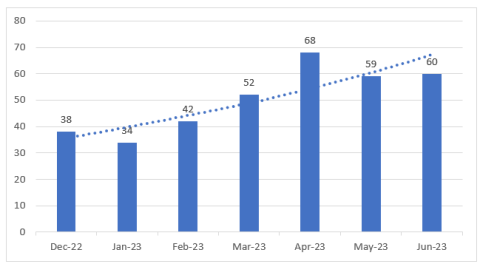
Table 2: Claimed Attacks per Group (December 2022 – May 2023)
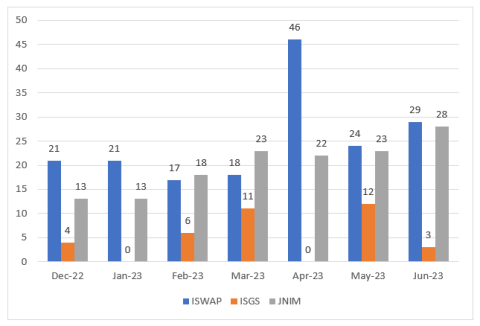
Table 3: Claimed Attacks per Country (December 2022 – June 2023)
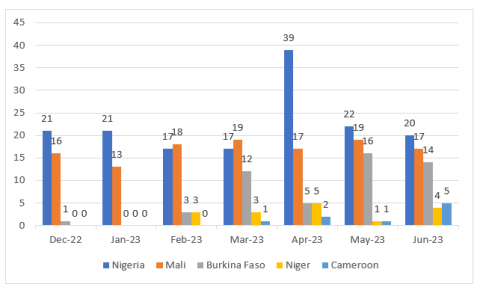
Map 1: Mali – Evolution in Jihadi Activity (2021-2022)
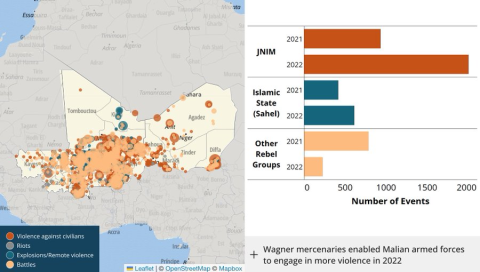
Source: Conflict Watchlist 2023: The Sahel (acleddata.com)
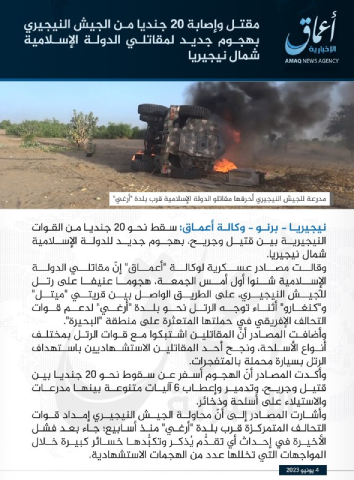
On June 8, ISWAP released a picture, allegedly from the attack, praising the suicide attacker Abu ‘Ali al-Ansari.


ISWAP is not only focusing its attacks on the Nigerian army and militia, but they also claimed renewed clashes with Christians, killing at least eight Christian villagers. Another recurring target are the so-called magicians. People accused of “sahra” or sorcery are executed without any excuse.
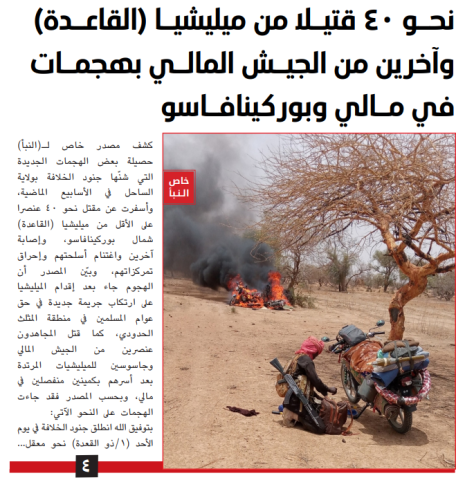
All other operations throughout the country, all small scale, were claimed by JNIM.
The situation in Burkina Faso is becoming more dire by the week. As Michael Shurkin described it for War on the Rocks: “the country’s demise places its southern neighbors, Benin, Côte d’Ivoire, Ghana, and Togo in serious jeopardy. These countries have already been the site of jihadist attacks, and jihadists are using Burkina Faso as a safe haven. As a result, the potential for jihadist insurgencies to take root in those countries is growing.”
Table 4: Total Number of Claims
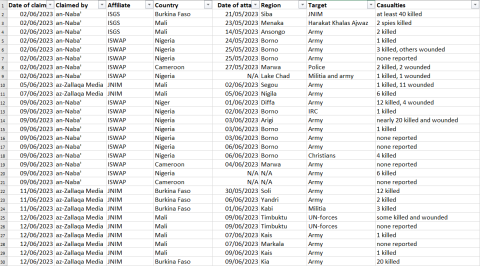
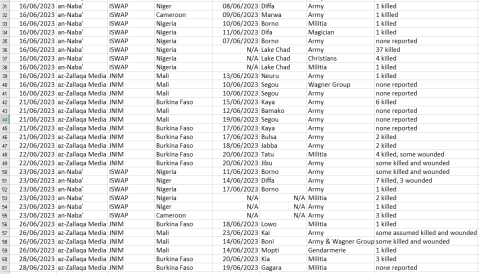
In June, as in previous months, ISGS was very scarce in sharing operational details through its propaganda outlets. Only three attacks were claimed. Two low impact attacks with few casualties were reported in Mali, and one report was released on a daring operation targeting JNIM. According to its own reporting, ISGS killed at least 40 JNIM-fighters in Burkina Faso.
Table 5: Number of Attacks by ISGS

In northern Nigeria, ISWAP continues to focus its operations on the regions of Borno and Lake Chad. These operations of ISWAP are part of the larger campaign for control of the Lake Chad area. This includes operations targeting the forces of Nigeria, Niger, and Cameroon.
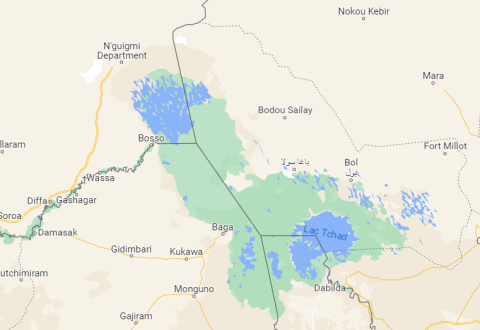
Table 6: Number of Attacks by ISWAP
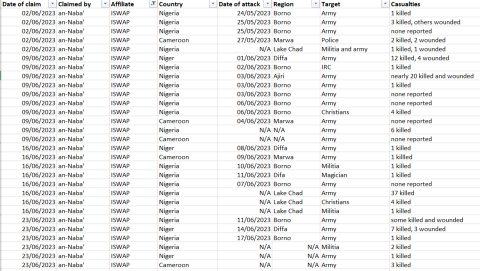
For the first time since December 2022, the number of attacks claimed by JNIM exceeded 25, with a total of 28 claimed operations. Most attacks were conducted in Mali, where a total of 15 operations were claimed. The rest of the attacks occurred in Burkina Faso. The attacks in Mali were of relatively low impact with few casualties, with two exceptions. On June 9, JNIM clashed with U.N. forces in the area of Timbuktu and reportedly killed several U.N. peacekeepers.

The most impactful operations claimed targeted the Burkinabe army and militia forces. On June 11, az-Zallaqa Media, the JNIM-linked propaganda outlet, reported on an attack that JNIM forces had allegedly conducted on May 30, killing 12 Burkinabe soldiers. On June 12, the group claimed that it had conducted an attack on June 9, killing a total of 20 soldiers.
It is very likely that the situation in Mali and neighboring Burkina Faso will quickly deteriorate as the Malian coup government succeeded in persuading the U.N. Security Council to not extend the mandate of MINUSMA, with forces already beginning to leave the country. Some security gaps left behind by the withdrawing U.N. blue helmet forces will likely be filled by the Malian army in cooperation with the Wagner Group. However, it is likely that the overall security situation will most certainly be exploited by ISGS and JNIM. It seems safe to state that both countries will face an increase of Jihadi terrorist attacks in the coming months.
Table 7: Number of Attacks by JNIM
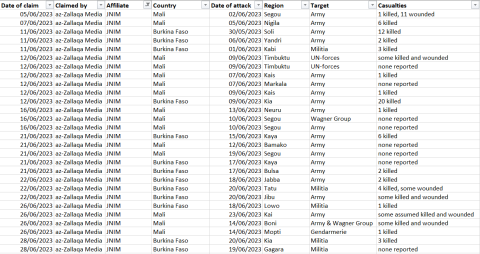
Unfortunately, the trend observed throughout the last months continues, and the Sahel’s security situation continues to steeply decline. If the pace in which terrorist operations and attacks have increased since the end of 2022 continues throughout the rest of 2023, it is very likely that by the end of the year, the region will experience on average of more than 100 attacks per month.
Obviously, this is just a statistical model. It has not considered external factors such as changing weather conditions, new deployments of security forces, and increasing involvement of the Wagner Group that could both mitigate or exacerbate the increasing security challenges the region experiences.
Nonetheless, what is clear is that the region experiences a sustained evolution towards increased terrorist violence and control. At this point, the overall situation in the Sahel is so precarious that further escalation is most likely. Even more concerning, an increased number of reports indicate that other countries in the wider region are also being drawn into the quagmire and that insecurity is spreading beyond the core operational areas of JNIM, ISGS, and ISWAP.
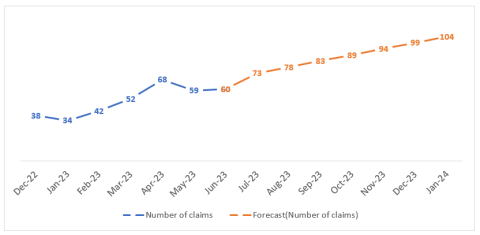
As a high-ranking officer at Belgium Defense puts it: “If we want to tackle this, we need a lot more people and resources and a different approach to development cooperation. We've been saying that for years, but it's not going to happen. No people, no resources and development cooperations are still giving money without questioning whether the money is being used effectively. (…) This will come back to us like a boomerang. Extra migrants at the door if the Sahel falls and extra attacks are unavoidable.”
Extremists: Their Words. Their Actions.
Fact:
On May 8, 2019, Taliban insurgents detonated an explosive-laden vehicle and then broke into American NGO Counterpart International’s offices in Kabul. At least seven people were killed and 24 were injured.
Get the latest news on extremism and counter-extremism delivered to your inbox.